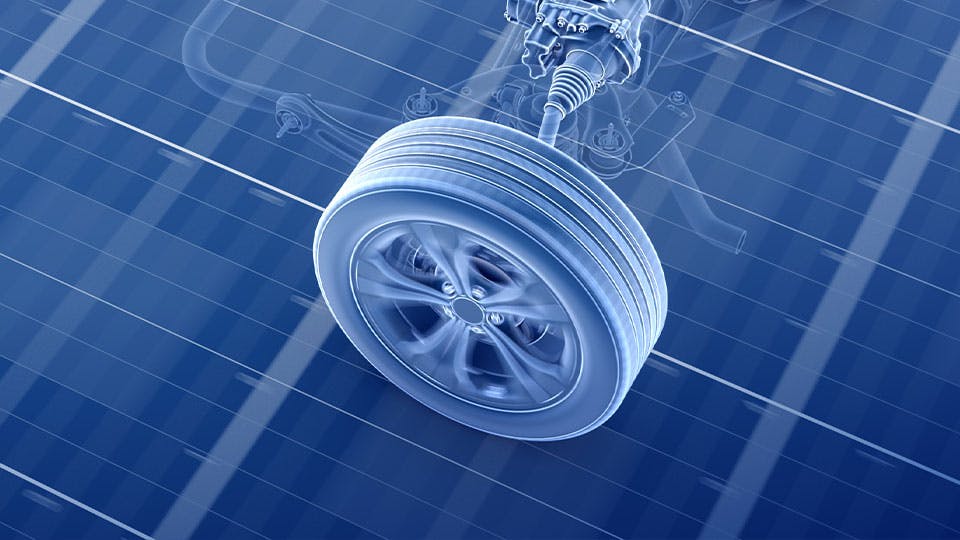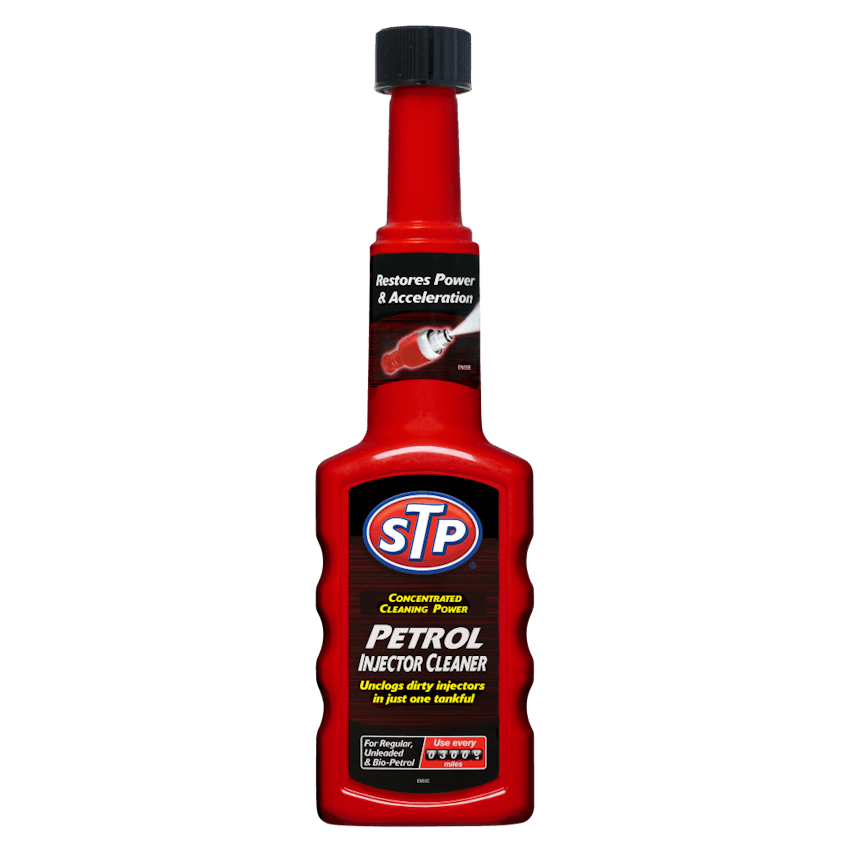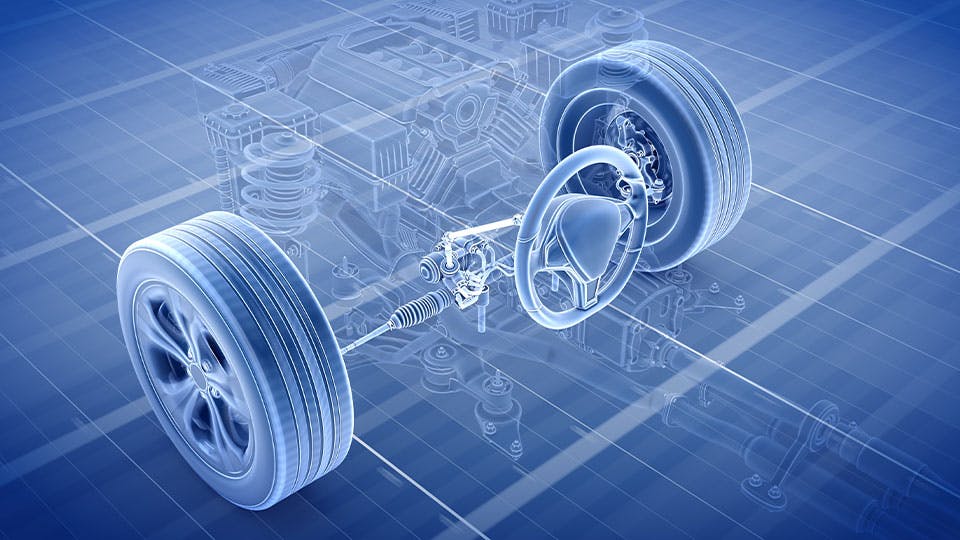Tyres

Table of contents
Tyres are where a car meets the road. A vehicle’s steering, suspension and braking systems all depend on tyres to perform at their best.
Checking Tyre Pressure
Over- or under-inflation can cause irregular tread wear, poor steering and braking response, reduced traction and even complete tyre failure. Underinflated tyres also create more rolling friction, requiring more energy to maintain speed and resulting in poorer fuel economy.
How to Check Your Tyre Pressure
- Find the tyre information placard inside the driver’s door or door jam. It will specify the suggested tyre pressures for the tyres, including the spare.
- Remove the valve stem cap and quickly depress gauge onto the valve stem until the air stops leaking out.
- Repeat this process on each tyre.
PRO TIP:
Keep a pressure gauge in your glove box so it’s always accessible. If it is low, add air until it reaches the right pressure and screw the cap back on.
Tyre Inspection for Wear and Damage
A quick tyre inspection will tell you about the condition of not only your tyres, but also your steering and suspension systems.
Checking Your Tires’ Wear Patterns
Excessive outer tread wear - caused by under-inflation.
Excessive center tread wear - caused by over-inflation.
Feathering - usually caused by incorrect wheel alignment or worn steering parts.
Cupping - caused by bad shock absorbers or worn suspension and steering parts.
Tread depth - At least 1.6mm throughout a continuous band in the centre 3/4 of the tread and around the entire circumference of the tyre
Check for shallow tread depth and cracking.
Check for cracking and blistering of the rubber on the side wall and between the treads. If any cracks or blisters are visible, the tyre needs to be replaced.
PRO TIP:
Place a quarter upside down and face out between the treads. If you can see Washington’s whole head, you should consider replacing the tyre.
Tyre Rotation
Rotating tires extends their service life and helps keep tire treads wearing evenly. Rotate tires at every oil change or every six months. Different types of tires require different rotation patterns. Check your owner’s manual for the advised rotation pattern.
Tyre Rotation Patterns
Know your tyre rotation pattern and save miles on your tyres.
PRO TIP:
This is a good time to perform a thorough inspection of each tyre and find signs of worn steering and suspension parts.
PRO TIP: If the valve stem cap is green, it is probably filled with nitrogen instead of compressed air. Nitrogen and compressed air can be mixed, so if you find yourself low on air with no nitrogen in sight, you’ll be just fine using compressed air.


















